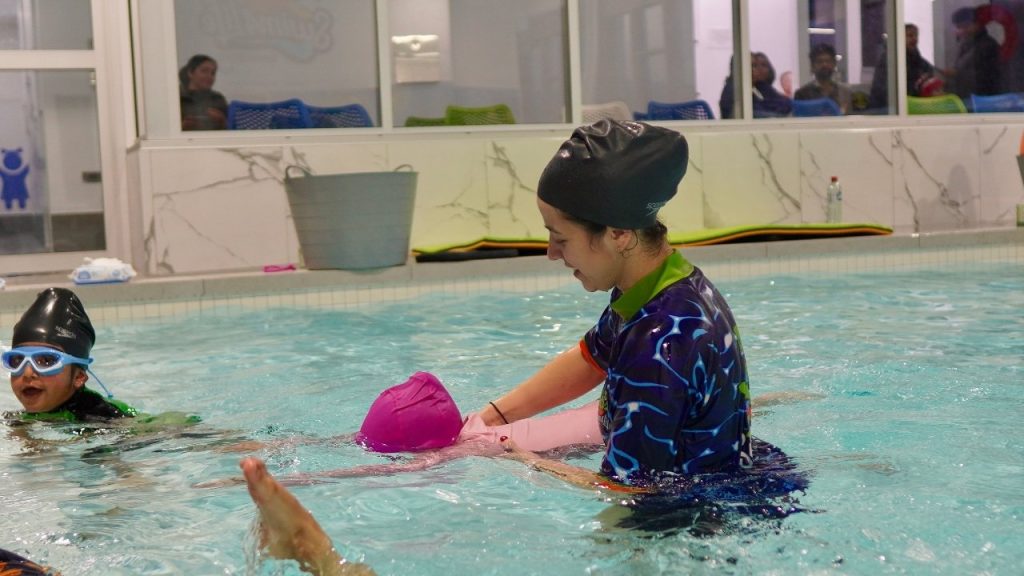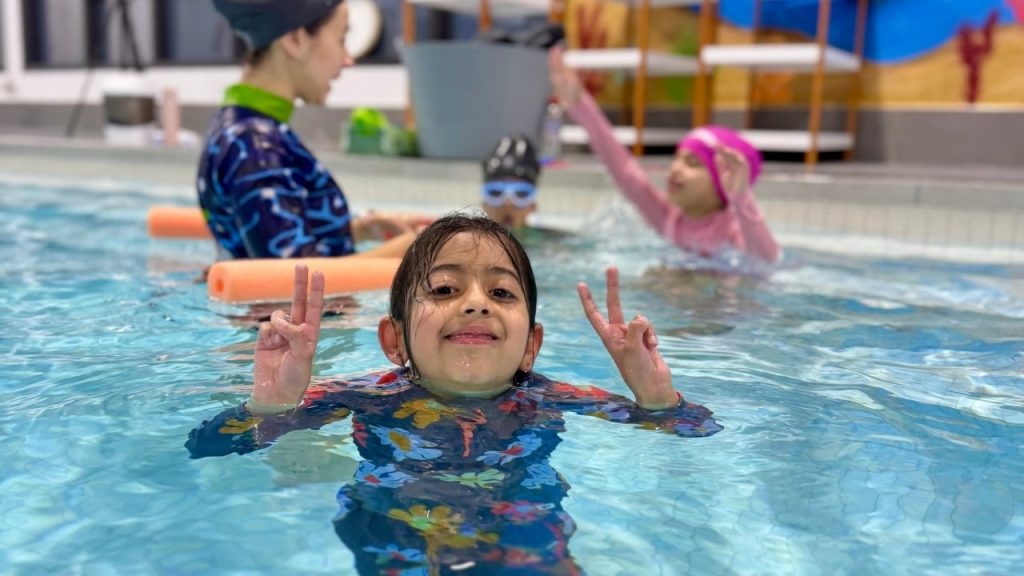Swimming is more than just a recreational activity – it’s a skill that offers lifelong physical, emotional, and social benefits. Over the years, I’ve seen children grow stronger, more resilient, and confident in the water. However, while the lessons matter, the role of parents in swimming is equally important. Therefore, this blog explores how you, as a parent, can play a supportive role in your child’s swimming journey.
Water Safety Supervision
As a swim teacher, I cannot emphasise enough that ensuring water safety is the first responsibility of moms and dads. Even when a child has made significant swimming progression, constant supervision is non-negotiable.
Accidents in and around water can occur in seconds and silently, making adult presence crucial. Therefore, reviewing summer water safety for children helps reinforce these practices in swimming pools, beaches, and lakes where risks are higher.
How can you support
Stay focused and present during every swim session. Position yourself where your child can see you, as your presence provides reassurance and confidence while reinforcing safe behaviour.
Quick tip
Have simple conversations before bath time, pool visits, or holidays to make water safety a natural part of your child’s routine. This strengthens their swim development and water safety awareness.

Teaching Water Safety Habits Early On
One of the crucial duties of guardians is helping children establish safe water habits from a young age. When introduced early, these habits become second nature, protecting them during baby swim classes and adult sessions.
Early education also ensures efficient swimming progression because children feel secure and understand their limits. This significantly reduces risks and encourages confidence in new environments.
How you can support
As a parent, reinforce practical steps, such as safe entry and exit from the pool, following the teacher’s instructions, and respecting designated swim areas. These small behaviours support long-term water safety.
Quick tip
Transform safety rules into fun games, like spotting the safe pool edge. This keeps your child engaged while learning life-saving skills.
Building Confidence and Overcoming Fear
Confidence is essential in every stage of a child’s swimming progression. When fear dominates, it distracts from learning and slows down water skill development. However, when children feel secure, they can focus on mastering techniques, enjoying the water, and building independence. Over time, this confidence lays the foundation for both safety and a permanent love of swimming.
How you can support
As a parent, always acknowledge and celebrate your child’s small milestones, such as dipping their face in the water or attempting a new stroke. Children also mirror the reactions of their family members. Therefore, working together to gradually explore ways of overcoming fear and hesitation makes the process faster rather than overwhelming.
Quick tip
After each lesson, ask, “What’s something you felt proud of today?” This encourages self-reflection and reinforces their confidence.
Supporting Skill Development Through Encouragement
Encouragement fuels persistence. When children encounter challenges, such as mastering breathing techniques or refining strokes, positive reinforcement from moms and dads helps them push through.
From my teaching experience, children who feel supported at home show remarkable resilience in class. This helps keep their swim development steady, even when lessons seem difficult.
How can you support
Make it a priority to attend lessons regularly so you’re familiar with the skills being taught. This allows you to offer targeted involvement outside class. At home, repeat positive phrases used in lessons to reinforce confidence and strengthen learning.
Quick tip
Always praise efforts over outcome to build resilience, persistence, and a healthy attitude toward swimming.
Fostering a Lifelong Love for Your Children Swimming
When children associate swimming with fun and family connection, it transitions from just a skill to a lifestyle habit. A positive introduction to the water encourages long-term swimming progression, where children continue to practice even outside of lessons. This motivates children to stay active, confident, and water-safe for life.

How you can support
Make swimming part of your family routine, whether it’s a weekend trip to the pool or a beach outing. These shared experiences strengthen bonds between family members. You should also share inspirational swimming stories or watch international events together to help your child see what’s possible through dedication and passion.
Quick tip
Children often learn best by example. Show your swimming enthusiasm, as this can be the spark that turns swimming from an obligation into a cherished part of your child’s lifestyle.
Supporting Your Child’s Swim Journey at Swim4Life
At Swim4Life, we view the role of parents in swimming as central to their children’s success. When other family members are actively engaged, children progress more quickly, stay safer, and enjoy their time in the water. That is why our swim schools encourage parent involvement and provide the best environment for learning.
Our strength lies in our small class sizes, warm and welcoming mineral water pools, and personalised teaching approaches. Together, these qualities ensure your child receives the best support and safety. Join Swim4Life today and watch as your child grows in a nurturing and safe swimming environment.





